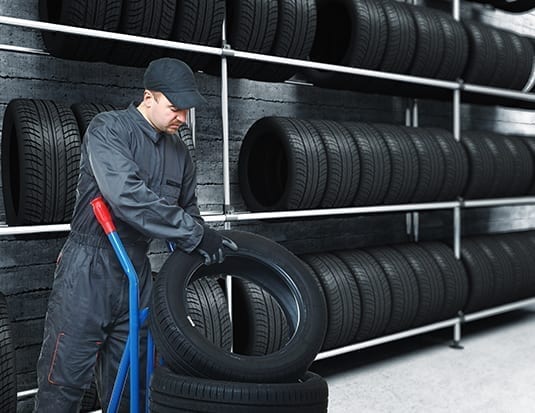Keep safety top of mind when working with inventory.
You already know safety is important when it comes to the installation and disassembly of tires, but do you think about safety when dealing with inventory?
Two years ago, we had a fatality, and this year, we had a broken leg. Both happened while handling inventory. The tragedy happened because someone didn’t realize the weight of a very large tire, or the proper procedure for picking it up. The person got in between a tire and a pinch zone, and that’s when the trouble occurred.
True, these were tires in excess of 10,000 lbs. But with truck tires, you may be picking up 12 at a time. Do you know the weight? Are you using proper lifting procedures if you’re lifting with your body, or the proper procedures if you’re using equipment? That’s a big part of inventory management.
Back in the day, truck tires would weigh maybe 50 to 60 lbs. Now they weigh almost 200 to 300 lbs., depending on the application. Times have really changed. In our training with TIA, every program has a detailed introduction on proper lifting procedure of tires. There’s a picture of a guy picking up a tire, bending at the knees and the back, using his body to pick up the tire instead of just using his back.
Scrap tires
When you’re doing new tire inventory, you’re also handling scrap tires. You need to be familiar with scrap tire procedure. That means using personal protective equipment (PPE) because you’ve got belts hanging out of tires. In some cases, tires are extremely heavy. So it’s important to be well versed in procedures about picking up heavy objects.
In fact, because the chance of a fatality is low with truck or passenger car tires, people don’t have the same respect for safety procedures. A few years ago, the number one type of injury with tire technicians was back injuries and hand injuries. In the past couple of years, hand injuries have really climbed up because people are getting their hands caught in pinch points.
Certainly in the United States, probably the number one workmen’s comp claim is back injuries. It’s probably similar in Canada, since this is an industry wide issue, not just a geographical one.
Mobile tire services are really growing in Canada, and they have their own special challenges when it comes to tire inventory. They have to know proper strapping procedures, proper Transport Canada procedures for inventory. It’s something they need to think about—do they know what a tire weighs? These are transfer people, not tire people.
Evaluate location
When I started working with winter tires at my shop many years ago, my guys were constantly going to the back to the storage units, picking up the tires and throwing them into the back of the truck and bringing them around. I didn’t have a forklift at the time. That was a lot of strain on them—I didn’t realize they were picking up an extra 20 sets of tires a day. Not only were they installing rims and tires but they were also taking the other ones out. That’s when I purchased a forklift.
Evaluate your inventory levels, your storage, and consider whether you need an elevator or a forklift. It’s a tremendous idea to just evaluate the site where all your inventory is located. And then you fit your equipment to your situation because, remember, you need to keep your employees out of harm’s way.



